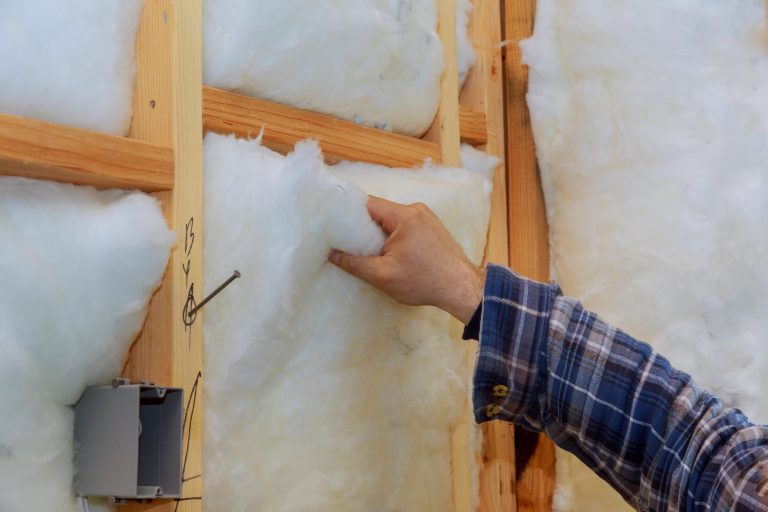
Our homes should function as a peaceful and quiet sanctuary from the turmoil of the outside world. But that is becoming more and more difficult as the world gets busier and noisier every day — especially if you’re working from home and need some peace to get anything done. In this comprehensive guide, we will give you tried and tested methods to soundproof your home.
But before we learn how to soundproof your home, it is imperative that we understand first how sound works. This knowledge will be the foundation of everything we will do in making your home as quiet as possible.
How Sound Works
Sound is created when something vibrates and sends waves (vibrations) through the air or other media (solid, liquid, or gas) into our ears. The stronger the vibrations are, the louder the sound is.
The uniformity of a surface affects how sound is transmitted. Hard flat surfaces tend to bounce sound waves around, sometimes creating a long-lasting echo effect if the surfaces are parallel to hard walls. On the other hand. The softer and less uniform the surface, the less opportunity sound has to bounce off.
Also, the more distance there is from the sound source, the lower weaker the sound. But for a lot of us, distance is not always possible to reduce the intensity of sound. We live in areas or neighborhoods that we share with other people. Luckily, there are soundproofing materials that capture sound waves and prevent them from bouncing or traveling further.
What Are STCs, and Why Do They Matter?
STC stands for sound transmission class. It is a method of measuring sound. The STC rating reflects how much decibel reduction in noise can a noise blocker or absorber provide.
The higher the STC number is, the less likely you are to hear a sound from an outside source.
- A soundproofing material with an STC rating of 25-30 will allow us to hear a loud speech on the other side of the wall.
- At 35-40, speech is barely audible.
- At 45-50, loud sounds can be heard faintly.
- At 60 or over, most sounds do not disturb.
Soundproofing a Room
Soundproofing is about controlling noise. To apply the proper technique, determine what noise you want to control.
Broadly speaking, we want to control these two things:
- The sound generated within your home.
- Noise from the outside.
Soundproofing Techniques
There are two techniques in soundproofing:
- Sound absorbing — objects that soak up sound, so it doesn’t bounce.
- Sound blocking — materials or methods that reduce or stop the transfer of sound. Used to prevent noise from traveling through walls, ceiling, floors, doors, and windows.
You can use a combination of these techniques to soundproof your home effectively.
Sound Absorbing Materials and Techniques
To lessen echoes that cause noise, absorb sound with soft surfaces and materials. In a typical room, these materials include thick drapes, carpets, and upholstered furniture. Avoid hard materials like hardwood, tile, and laminates if you want to minimize sound bouncing around a room.
There are also materials that you can buy for this specific purpose such as acoustic tiles or foam. Although they are usually used in theaters and recording studios, they can be as equally effective in normal rooms. You can buy a pack of twelve 12-by-12-inch acoustic panels for less than $20.
Sound Blocking Materials and Techniques
To block the noise coming from outside your house or a room, you need materials that are typically thick, heavy, dense, thick, and in some cases flexible. They will be too dense for noise to penetrate them.
A 12-inch-thick brick wall is a particularly good sound blocker. But they are rare so most of us turn to other materials to block sound. Extra-thick layers of drywall, green glue, and mass-loaded vinyl (MLV) are some of the best materials for blocking sound.
The most effective sound blocking techniques involve tearing up the wall or ceiling and replacing doors or windows which can be awfully expensive and takes a lot of time and effort so if you don’t have the budget now, you can opt for sound absorbing methods first and upgrade to sound blocking later.
Here are ways of permanently sound blocking specific parts of your home.
- Doors
Doors play a huge role in controlling the movement of sound in a house. Doors are usually the thinnest part of a wall, so they do a poor job of blocking out noise. The noise just passes right through them.
You can significantly control sound by simply replacing a hollow-core door with a solid-core door. Solid-core doors have a solid core of composite material or wood inside them. They block noise effectively because of their density. Manufacturers sell many types, ranging from affordable Medium Density Fiberboard (MDF) to more expensive hardwood doors.
A hollow-core door has an STC of less than 20. If you were to replace that door with a solid-core door, you would end up with an STC rating of 34 to 36. This would only block low speech though and not loud speech or other noise.
You can go one step further than a solid-core door and buy a sound-blocking door. These are doors made specifically for blocking sound. Although keep in mind since their interior is made up of very dense material, they are heavier than a normal door.
- Windows
A single-pane window has an STC rating of 18 to 27 while a double-glazed window has an STC rating of 28-32 which means there isn’t much improvement in terms of soundproofing. The cheaper alternative versus replacing windows entirely is installing Soundproof Window Inserts on top of your windows. These things have an STC rating if 38-40.
- Walls
If you want to control noise from the outside or across rooms, the walls are key. Most soundproofing methods for walls also work for ceilings.
For comparison purposes, a conventional house interior wall with 1/2” drywall on each side has an STC rating between 15-33 while an insulated wall with slightly thicker 5/8” drywall on both sides can have an STC rating of around 40. Adding an additional 1/2” drywall on both sides increases the STC rating to 45 and by moving up to 5/8” pushes it to an STC rating of 60.
A more effective way to build an interior wall is to mount a 1/2” gypsum wallboard on special resilient channels or clip across the wall, resulting in an STC rating of 46.
Mass Loaded Vinyl (MLV) barriers offer a huge step-up sound blocking, with an STC addition of between 25-32. MLV is made of high-density organic salts and sands, as well as tiny metal particles; these 1/4 to 1/8” thick products are sold in 4-by-8-foot sheets and 4.5-by-20-foot rolls.
- Ceilings
The best method to soundproof a ceiling is to apply two layers of 5/8” of drywall with green glue to create a very dense ceiling with an STC rating of about 40, which is enough in most situations.
To help quiet the noise of a room that is below other rooms, you can opt to install an acoustic ceiling instead. Companies such as Armstrong World Industries offer a wide range of acoustic ceiling products that are popular for suppressing the sound within a room and can help cut down noise transfer.
- Floors
If you are building a new home or having a major remodel, and you don’t want to hear the noise above in the room below and vice versa, you can build a soundproof floor. You can achieve this by pouring a 1 1/2” slab of lightweight concrete on your floor. Although, keep in mind that this method will raise the floor level, so this must be taken into consideration.
The best way to soundproof your home depends on many factors, such as the size of your house, your budget, and your soundproofing needs. If you only wish to block out the occasional parties across the street, you might just want to seal the window and hang heavy drapes. On the other hand, if you are building a library next to an amusement park, it might be worth investing more to reach your soundproofing goals.






